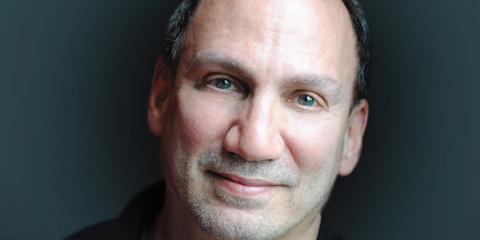Q&A with Danny Pelzig

Pelzig’s work has appeared in several Tony-nominated Broadway productions and at the country’s most prestigious opera and dance companies, including five years as resident choreographer for Boston Ballet. He joined the Boston Conservatory faculty in 2018, and in the upcoming semester will be teaching advanced ballet technique, ballet repertory, and dance composition for musical theater in both the Dance and Theater divisions.
You have a long history with Boston performing arts organizations, from your four-year choreography residence at Boston Ballet to your frequent collaborations with Huntington Theatre Company. What brought you to Boston Conservatory at Berklee?
Two words: Cathy Young. Cathy and I knew each other from our days at Boston Ballet, and she was aware that I had gone on to an international career, working as a director and choreographer on Broadway, off-Broadway, at the Metropolitan Opera, La Scala, and many regional opera and theater companies. She was also aware of my deep roots in the Boston cultural community, including Huntington Theatre Company, Opera Boston, the Boston University Opera Institute, the Handel and Haydn Society, and, most recently, Odyssey Opera. Cathy felt that my professional experience in all of these art forms could make an invaluable contribution to the Conservatory.
You’ve spent most of your life as a performer, director, and choreographer. What drew you to teaching, and what do you enjoy most about it?
I love sharing my professional and life experiences with students in all disciplines. Throughout my career, I have always spent time teaching. While I was a performer, I taught regularly at the New York School of Ballet. As a working professional, I spent a year teaching at Barnard College and several semesters at University at Buffalo and Boston Conservatory. I regularly taught master classes at the Juilliard School, the Ryan Opera Center at the Lyric Opera of Chicago, and Boston University Opera Institute, and staged a cross-divisional production of West Side Story at the University of Southern California. Being a dancer or an actor takes courage and fortitude, and I take seriously my obligation to nurture and encourage all those who choose to pursue the arts.
As someone who teaches in both the Dance and Theater divisions, how do you adjust your approach as a teacher and choreographer to these different styles?
I find that I adjust to each individual student rather than the division in which the student is registered. One student might feel the need for more refinement in their line and artistry, another might want to be challenged technically. Every artist is unique, and I attempt to support what makes each student special.
What’s your favorite show to work on, one you could come back to again and again?
This is not a one-answer question! Having directed and choreographed multiple productions of Guys and Dolls, West Side Story, My Fair Lady, and Candide, I would happily stage them all in perpetuity. But in all honesty, almost anything by Sondheim—A Little Night Music, Company, Into the Woods, Sunday in the Park with George, and Sweeney Todd, all of which I have choreographed and would gladly do so again. The sophistication and lyrical wit of Sondheim’s music, the humanity of his characters, the intricacies of his plots, and the seamlessness of how his scores work with the book make his shows incredibly rewarding to work on.
What advice do you give most often to students seeking professional careers in the performing arts?
- Don’t get your self-worth from the mirror.
- Be fearless, take risks, and work hard.
- Be your true, authentic self—you are unique.
- If you are on time, you are late.
- Be prepared.
